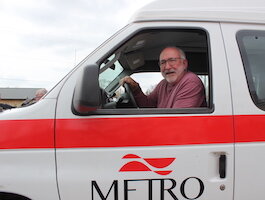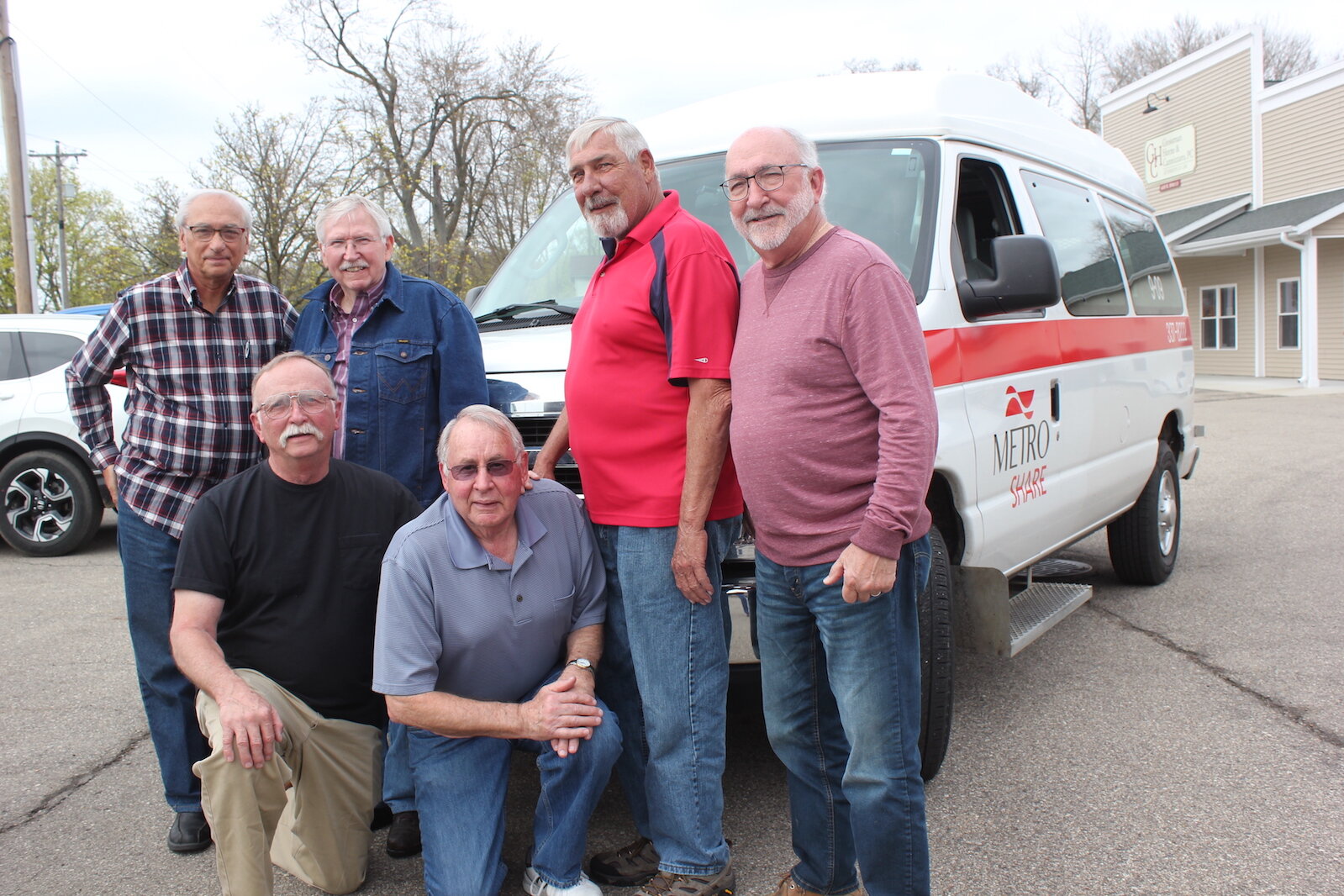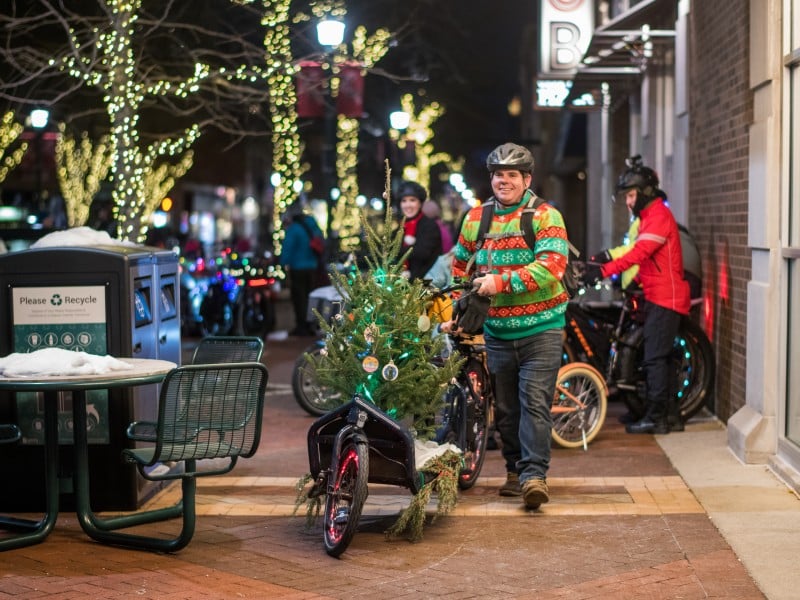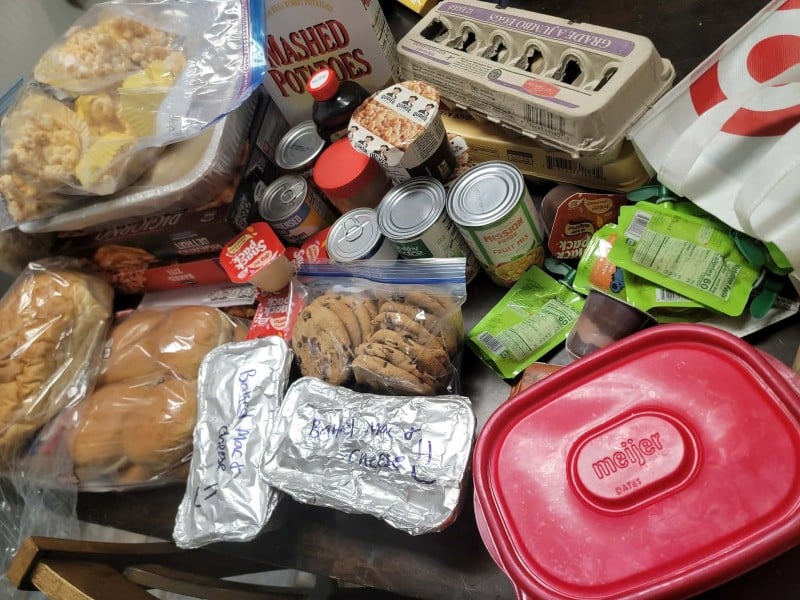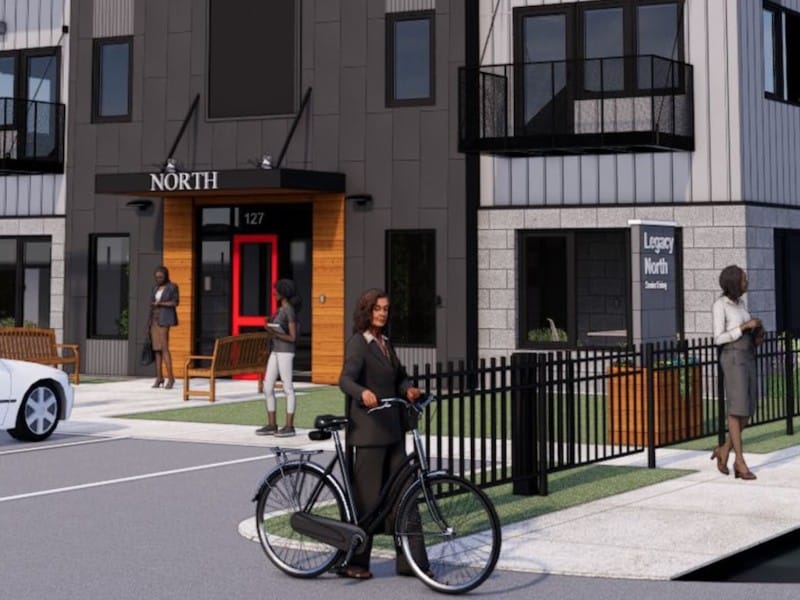Editor’s note: Second Wave is fostering discussions between people working on issues affecting both rural and urban Kalamazoo County. This is the fourth part in the series and focuses on the challenges of transportation for cars, bikes, and pedestrians in urban and rural communities.
Our transportation system seems to be made for individuals with motor vehicles first, all others second.
This leaves many with little to no alternative options: children with no sidewalks to school, seniors living as shut-ins because they can’t drive, workers who need to get to jobs yet can’t afford a car.
For Second Wave’s Urban-Rural Exchange series, we’ve been looking at issues that both urban and rural Kalamazoo County share. Much of the time the problems are the same for everyone. But this, lack of transportation, hits harder in the country and small towns. The simple facts of greater distance between destinations and lower population density make alternative options to motor vehicle ownership difficult.
However, there are people and organizations working to help residents outside of city limits get from here to there. And as is befitting a story of transportation this one takes readers on a journey with stops at different issues along the way. We gathered a few together for an online meeting to learn more:
Sean McBride, executive director of Kalamazoo Metro Transit
Mary Gustas, executive director of Comstock Community Center
Paul Selden, president of Bike Friendly Kalamazoo
Drew Johnson, executive director of South County Community Services, spoke in a separate interview.
Rural roadblocks for Public Transportation
Public transportation is at the heart of the multimodal and complete streets methods of infrastructure planning.
This century’s urban planning aims to make it possible for all — pedestrian, bicyclist, bus passenger, and motorist — to use streets in a safe, accessible, and practical manner.
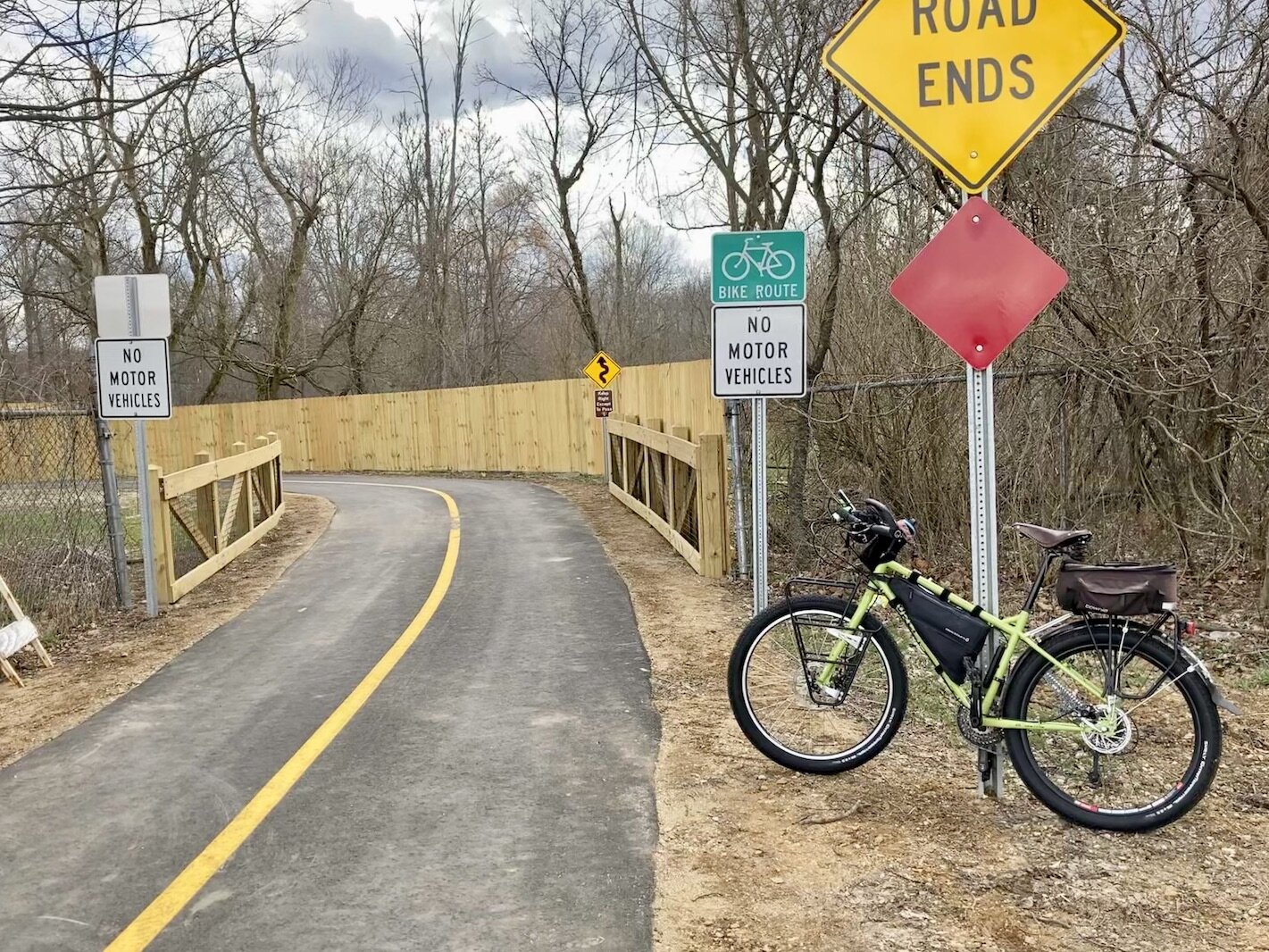
But where the bus routes end, the streets tend to stop being complete.
Drew Johnson, Executive Director of South County Community Services, which serves Vicksburg and the surrounding areas, spoke separately about their efforts to get rides for people in their area.
“We work with a lot of people who have trouble with transportation,” Johnson says. “Transportation is much more expensive to provide in our area than it is in the city, and that cost gets passed on to our clients. There are no parts of our service area that I am aware of that have a fixed bus route—all areas are instead served by curb-to-curb individual service in the (Metro) vans.”
During the online meeting with McBride, Gustas and Selden, frustration with the lack of bus routes into smaller communities was clear.
“Sean and I have had several different conversations about access to the rural community. I think he has more obstacles in his way being able to provide (public transportation)” Gustas, with a laugh, says of McBride.
She’s pushed for a route to Pavilion Estates trailer park in Pavilion Township. There was one at one time, serving 30 people regularly, but “because Pavilion Township didn’t want to kick in the dollars, that particular line dropped,” Gustas says.
“Metro attempted to do a line that I bugged him (McBride) about, out to Galesburg. It was not successful…. Part of the problem is that M-96 is a state highway, and you cannot stop on a state highway to pick people up.”
Near Galesburg, there’s a booming business area surrounding the Bell’s Brewery plant. A lot of employees could use transportation to their work on M-96, “but nobody wants to do the little road connection that goes from Bells Brewery back onto the highway,” Gustas said.
It’s clear that infrastructure meant for unhindered traffic throughput, under the jurisdictions of various governmental powers, is a roadblock for public transportation.
Vans for beyond the routes
McBride says that in non-pandemic years Metro provides around “three million rides per year,” but that is primarily in urban Kalamazoo and Portage. Their bus routes reach as far as the edges of Comstock, Oshtemo and Texas townships.
To serve beyond the fixed bus routes, they have Metro Connect vans. In non-pandemic years, Metro Connect provides 175,000 rides. “We do have people using it to get to jobs, medical appointments, to get to services,” McBride says. The cost is two-tiered, $12 per trip for most, $3 to $4 for seniors or people with disabilities.
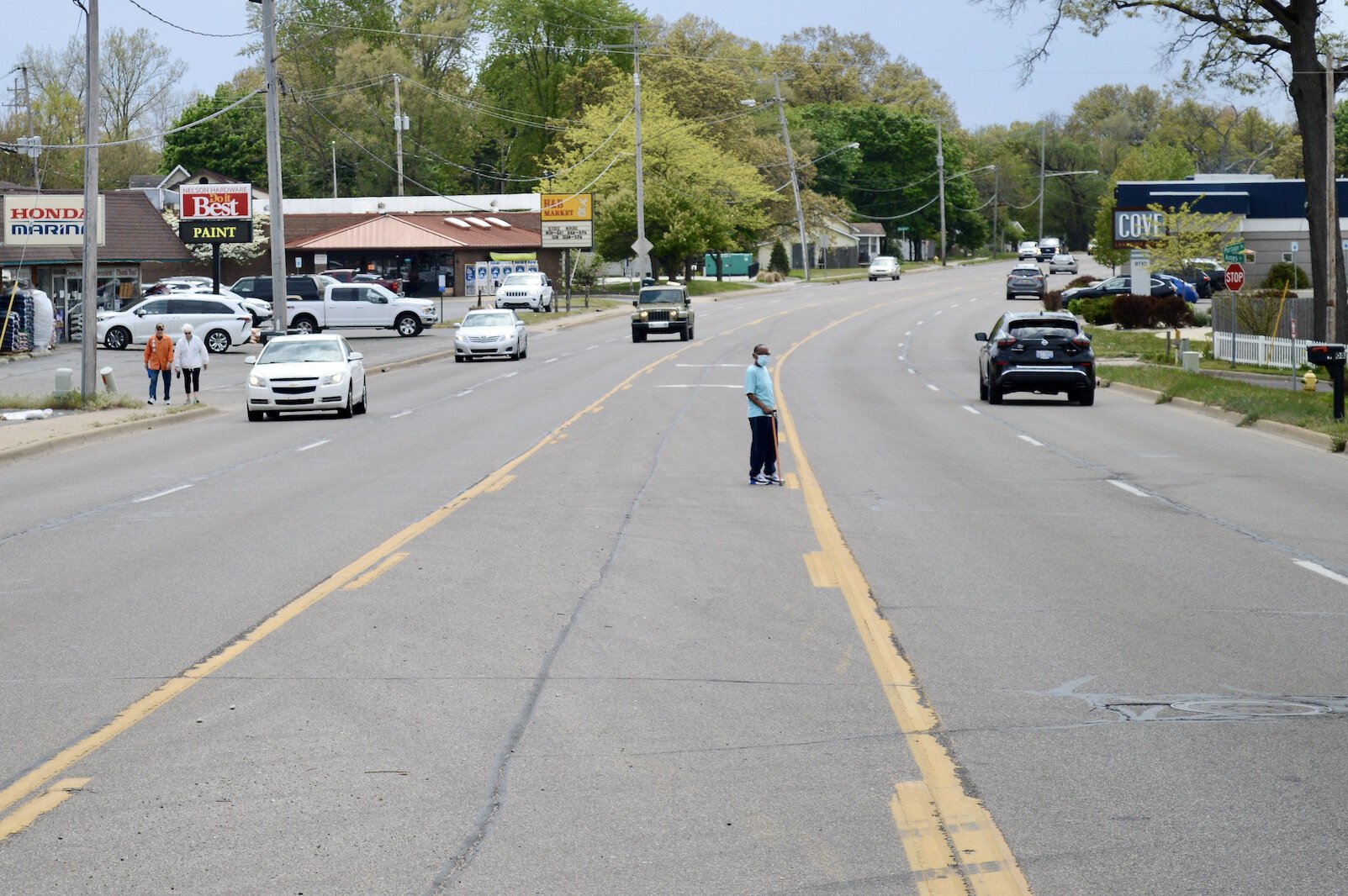
It could cost someone $24 a day to get to and from work. “There are agencies out there for people who can’t get the reduced fare to help subsidize the cost,” McBride says.
Johnson says that Metro Connect can be inconvenient and expensive for South County clients. A ride to get groceries can be “$16 each way. On top of that, most clients we have worked with find the system difficult,” he says. “Vans are often late because they give rides to several riders at a time, and our clients often need to schedule up to a week in advance.”
To fill in the gap for some home-bound residents, South County became a host for Metro Share vans. The vans are free for seniors, and people with disabilities can take trips of up to 60 miles outside of Kalamazoo County, funded by MDOT and local millages.
South County is one of the approved agencies hosting Metro Share vans. “Most days, we are giving two rides a day and taking people to medical, human service, and legal appointments. This is a great program that helps a lot of people, but we are often at capacity given the immense need in the area. Metro has been very flexible in working with us to develop our transportation program,” Johnson says.
Metro has faced increased demand for its van services during COVID. Voters helped in November by passing a five-year millage, estimated to raise $3.003 million in 2022 for the Metro Connect van service.
“There are a couple things out there that we really have to think about as a community, and a couple things I have to figure out as executive of the organization,” McBride says. “Number one is, it’s great to have demand and it’s great to have the resources to respond to the demand, but I also need qualified safe drivers to provide that service, and right now, like a lot of businesses, we’re understaffed.”
McBride also acknowledged that Metro’s van services might not be a viable solution for people needing to get to work, so they are looking at starting a rides-to-work program.
Non-motorized KATS
The Kalamazoo Area Transportation Study’s 2050 Metropolitan Transportation Plan was adopted and released for public comment Nov. 18.
The study’s Chapter 7 is a detailed look at non-motorized transportation, with funded and yet-to-be funded plans for pedestrian and bike infrastructure.
Map 18 shows Metro routes on top of proposed and existing non-motorized routes. It highlights how multimodal methods could help people get from point A to B: The bus might not get to B, but if one takes their bike on the bus, one can pedal to their destination after they get off the bus.
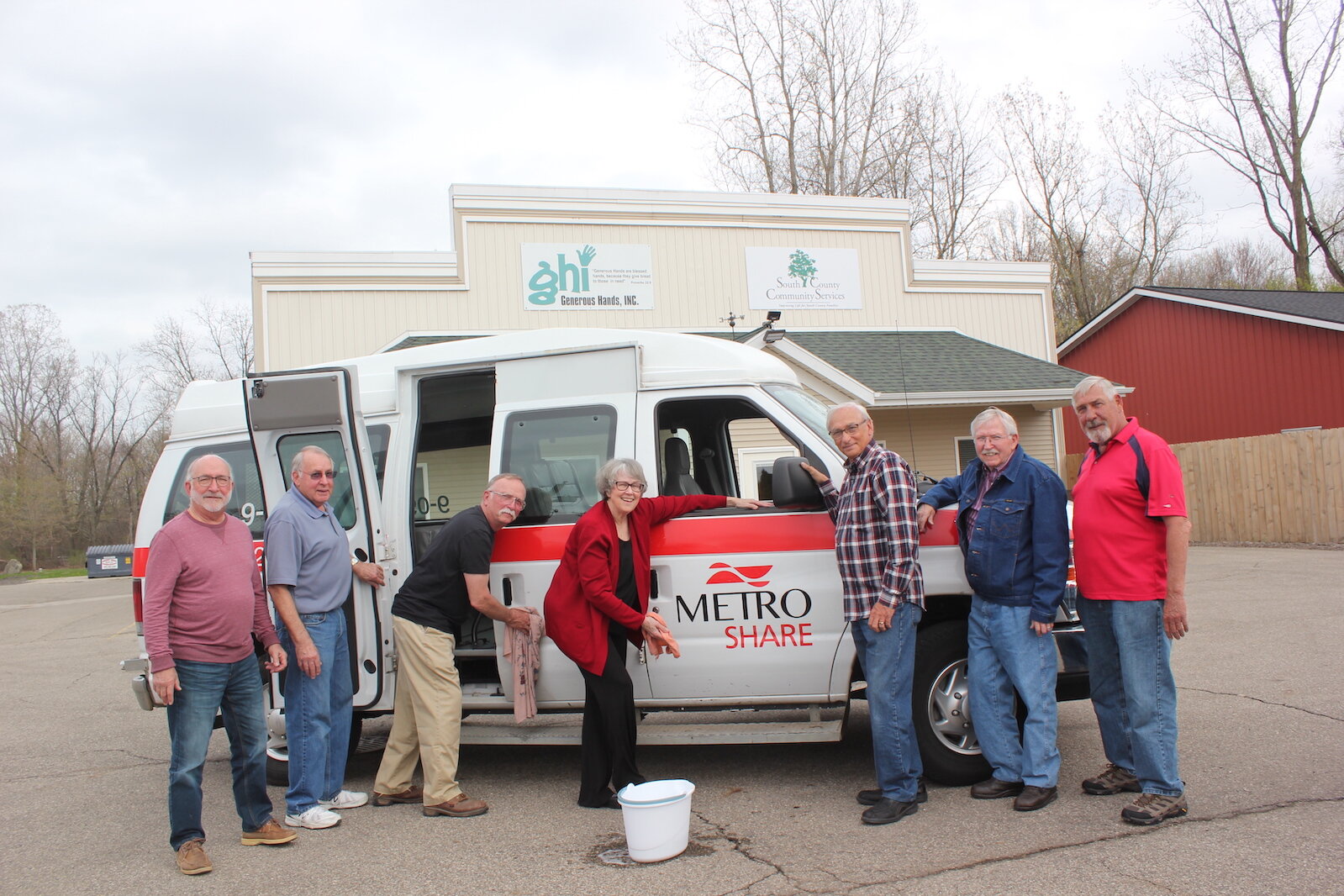
Or pedal the entire way — Selden knows of bikers who regularly commute 20+ miles to and from work.
Selden, a member of the KATS non-motorized subcommittee, says that as a life-long business owner he’s had an “interest in connecting people with employment needs with sources of employment….” He also wants to draw qualified people to the Kalamazoo area and keep them here.
He became involved with KATS because of his interest in connecting “named municipalities with each other.” Since 2012, the subcommittee has worked on finding practical routes for bikes to go as far as Paw Paw in the KATS study area. Bike routes can include roads with wide shoulders, bike lanes, and off-road shared pathways. They focused on connecting “transportation-oriented destinations,” such as small towns, businesses, and shopping areas.
People who can bike from Paw Paw to Galesburg “are few and far between,” Selden acknowledges. But more bike routes provide more alternatives for the car-less.
All the elements — bike routes, buses, sidewalks — have to work together, he says. “I think there’s a great need… for focusing on the interconnection between transit opportunities and other facilities…. In my opinion, we lag in terms of facilities for those pedestrians and bicyclists to wait for a bus and get off a bus safely onto a landing pad that doesn’t look like just a piece of grass, or sheltering from the cold winds that we get in southwest Michigan while waiting for a bus,” he says.
“In a microcosm, Kalamazoo, by building these facilities and making these connections, can help our community meet the competitive needs of our greater community, versus all the other communities competing for the same human resources (workers, residents, shoppers, etc.).”
People are a “precious resource,” he adds. Communities need “to treat them with such a degree of human dignity and respect that they want to continue to live here, and they aren’t struggling.”
Another mode in multimodal: Pedestrians who need sidewalks and safe crossings
McBride points out that Metro buses have bike racks. “There is a lot of use from people putting their bikes on buses. We’re also working as we design new bus stops and shelters, that we put bike racks there so people can leave their bikes” when they take the bus.
“I absolutely agree with Paul that it can be a part of their mobility solution, to use their bike and bus and public transit to get back and forth. Especially on the bus system, it’s not just the bus — no matter what it is, there is a pedestrian component to using the bus system, and with that, we need safe sidewalks, we need safe access, we need connection points, we need to be able to get across busy high-speed roads with signalized intersections.”
Recently McBride had a meeting with a business on Sprinkle Road, “they have employees who use the bus, but the challenge is there aren’t good pedestrian facilities along Sprinkle Road, so how do we work with them and the road agency that manages that stretch to provide that?
“I think this is an ongoing thing that we have to strive for as a community in our region, is balancing all these needs. Because there are certainly people who want to walk, or use public transit, or ride their bike to get to work, and there’s a lot of people working along the Sprinkle corridor. So how do we support those needs?” McBride asks.
Gustas says, “Paul, one of those things that you mentioned is adequate sidewalks. I’m going to tell you right now that in Comstock, there is no ordinance that requires that sidewalks be put in any new development. There’s no sidewalk all the way up 26th Street, which is where the bus route goes.”
She points out that there is only one protected bus stop on 26th Street. There are other un-sheltered stops along 26th. Though it runs through a residential area, and Comstock’s high and middle schools are also on the street, there is no sidewalk.
Gustas has heard talk about laying a bike pathway along 26th Street. (the KATS plan has a proposed bike route along the street on its maps) connecting with Gull Road, “but I’m not sure where that’s going to go in Comstock.”
“I tried to do a Healthy Community assessment several years ago, which talks about walkability for kids to go to school or to go to a grocery store or wherever, and there is no walkability. We scored a negative on that assessment. If you want to ride your bike in Comstock you’re taking your life in your hands by going any place other than the (Kalamazoo River Valley Trail).”
How much influence does the Comstock Township board have when it comes to placing sidewalks, and pathways?
“Several years ago the state stopped funding bike trails. And that would mean those funds had to come from someplace else. Comstock’s more concerned about the fact that they have roads that are in horrible shape. Again, the fact is that they don’t have any kind of ordinance that requires that new developments have a sidewalk,” Gustas says.
Other needs compete for funding, but there also seems to be a resistance to change in the township, according to Gustas. “They said, ‘Why would we want to have a sidewalk in a rural community. Everybody wants to walk on the road.’ Excuse me? That’s not the case. I knock my head against the wall on numerous occasions. I worked on a project with the school on trying to figure out how we might get sidewalks that would be accessible from some of the apartment complexes to the schools. That didn’t happen.”
She continues, “This is a safety factor. I see kids walking on the street in the morning to go to school. One of these days somebody’s going to get killed, and we’ll go, ‘Gee, what do we do now?'”
Rural resistance
McBride says that urban Kalamazoo’s complete streets mode of infrastructure — which takes into account everyone who uses the roads, not just cars — “has really been a benefit to public transit…. Road agencies, as they build a project along bus lines, need to consult with Metro. This is a great way to make sure we have good sidewalk connections and good, safe, ADA-accessible bus stops and bus shelters. And I have to say that all the road agencies, Portage, City of Kalamazoo, the (Kalamazoo County) Road Commission have been great partners in making this happen.”
The Michigan Department of Transportation has been a help “most of the time — not all of the time,” McBride says. “On these major corridors, Gull Road and Stadium Drive, for example, those are high-speed MDOT-controlled roads with a lot of high-density residential (areas), major apartment complexes along those corridors. A lot of the individuals who live there are using public transit and are pedestrians, bikers, walk across streets to get to their groceries…. It is our responsibility to be cognizant of those needs and design those needs in, and if a car does need to stop an extra two minutes at a stoplight to provide that opportunity I think most of us in this region would be accepting of that.”
Once out into more-rural areas, beyond the bus stops, there is resistance to accommodating non-driving users of public roads.
“Sean has been really receptive to requests and needs in outlying communities. There’s only so much you can do, and part of it is population density,” Gustas says. “Why would you take a bus out for ten people? It’s as simple as that.”
“Sometimes, it’s like the mentality (in the Comstock Township council) is, ‘I live on a farm, so why would I need access to a bus? Why would we need to have access to safe bike lanes?’ Because this is the wave of the future, this is where we’re going, this is what makes us a more appealing community to live in. And … don’t get me started,” Gustas says with a laugh.
Selden says that the KATS plan is not calling for “a sidewalk along every cornfield.” Infrastructure should go where appropriate and needed, like sidewalks from schools to neighboring residential areas, he says.
Selden makes the point that roads remaining unsafe for pedestrians and cyclists perpetuates a “self-fulfilling prophecy.”
“Without those sidewalks, you’re kind of condemning everybody to having to drive, and to have to congest the area,” he says.
“Let’s say you don’t have a sidewalk, a child gets injured seriously going to school — well that’s proof that you need to drive them to school. Walking is too dangerous. So why put the money into sidewalks when they’re just going to drive anyway? You see how that mentality doesn’t lead to any kind of progressive change whatsoever? And I don’t mean progressive in a political sense….”
Possibilities between 2021 and 2050
The KATS non-motorized plan has a list of funded proposals for new sidewalks and pathways up to 2030.
The entire study, as the title suggests, covers the next 30 years.
Selden says that, “What the KATS plan does… it looks out into the future quite far. Some people say it’s irrelevant because it’s got the number 2050 in it and I won’t be alive when 2050 rolls around.”
He stresses that much of what’s in the plan is “proposed…. it’s a place to start, it’s a place to begin planning and debate the pros and cons in the case of any particular bus stop or route or anything, any budgetary number in the proposed category. It’s a place to give people… a place to start to debate which route is the safest, for example.”
The plan is not set in stone. Proposed non-motorized routes “will be done sooner or later or not at all,” he says.
We’ve been using roads designed in the mid-20th century for motor vehicle use — and those were designed on top of roads initially meant for horse-and-buggies, roads redesigned at the start of the 20th century to accommodate Model T’s.
In the next 30 years, there could be many changes, Selden says. Population shifts, changing attitudes towards climate change and gas consumption, new vehicle technologies. Selden points to the rising popularity of electric e-bikes, and the rise of velomobiles in Europe — pedal-driven trikes enclosed by an aerodynamic shell that can average 30 MPH. “Is that a big eggshell on the road?” he jokes.
But change is difficult because “there are limited resources out there,” McBride says. “And we’re all trying to balance those limited resources.”

